The Effectiveness of Predictive Advertising in Multifamily
Predictive advertising has been touted as “the next big thing” in digital marketing — promising marketers smarter targeting, better-qualified leads, and cost-effective ad spend.
Other companies have championed the technology, claiming that predictive analytics can help forecast future renter behavior based on past data, making ad targeting more precise and impactful. But is predictive advertising really the game-changer it claims to be? Does it deliver “said results?”
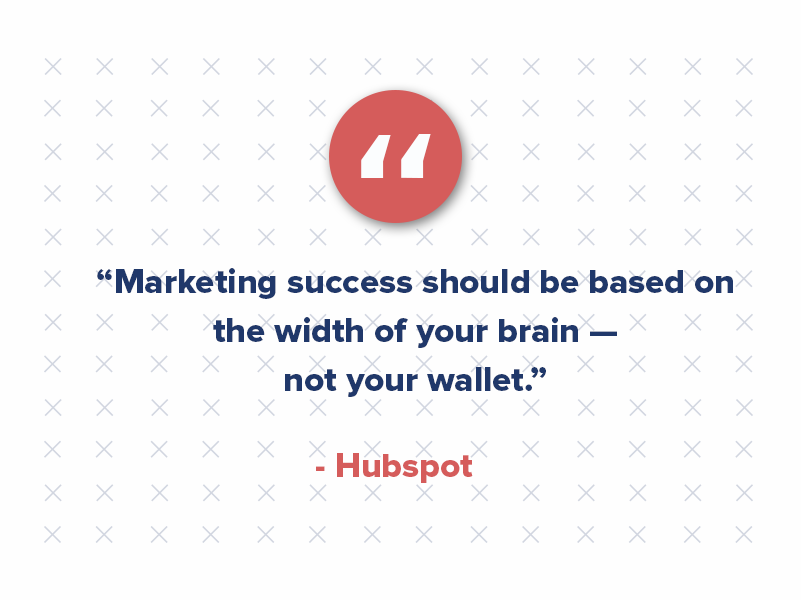
After digging into recent research and analyzing industry results from the last year, the evidence suggests that the effectiveness of predictive ads, especially in multifamily marketing, may not be as clear-cut as proponents would like us to believe.
In fact, we’ve found that more transparent strategies can often deliver better results, which is why we’ve steered away from predictive ad services.
Let’s explore why predictive ads fall short and why Criterion.B takes a more straightforward approach to multifamily marketing.

What Is Predictive Advertising?
If you have spent time working on digital ads, you know the cost has risen significantly in recent years. Meta’s cost per thousand (CPM) has increased 61% yearly, and Google’s programmatic display CPMs increased 75% in the same period, according to The Drum. Meanwhile, many brands are tightening their budgets due to economic uncertainty, yet consumers are expecting better ad targeting, personalization, and overall messaging than ever before.
So how have advertisers and agencies attempted to combat this? Well, they’ve been dabbling in predictive ads (or trying).
“We rushed into [predictive advertising], hoping for big returns but ended up spending too much with little to show for it,” said James Heartquist, owner at Modern Property Solutions. “Our main problem was not using our budget wisely, which led to few sales.”
Predictive analytics uses artificial intelligence (AI) and data from past campaigns to forecast future behaviors. In theory, it allows marketers to target potential renters before they know they’re in the market for an apartment. The idea is simple: by using data like browsing habits, previous searches, demographics, subscriptions, and demographic information, you can predict who is most likely to convert and target your ads accordingly.
Predictive advertising is a subset of predictive analytics that uses historical data, machine learning techniques, and algorithms to target audiences and optimize ad copy and media spending accurately.
In essence, predictive advertising enables brands to build highly targeted audience segments based on millions of behavioral signals and customer attributes. There are several key techniques used in predictive advertising, each offering different levels of sophistication and impact:
- Look-alike modeling: This technique identifies new users who resemble an existing customer group. It’s a simple approach often built into platforms like Facebook and LinkedIn.
- Classification modeling: Similar to look-alike modeling but with an additional layer of filtering, this method excludes users who aren’t ideal targets.
- Click-based optimization: By analyzing user intent, AI predicts the likelihood that a customer will take specific actions, such as clicking on an ad or making a purchase.
- Uplift modeling: This advanced technique predicts how an ad or intervention will affect a customer’s likelihood of purchasing, giving brands even deeper insight into campaign effectiveness.
The Predictive Ads Promise vs. Reality
Companies promote predictive advertising as a way to get more qualified multifamily leads at a lower cost. According to them, this technology helps to refine Google Ads targeting and reach potential renters earlier in their decision-making process.
While this sounds great in theory, industry research shows the results aren’t always as successful as predicted. The goal is to create a more personalized and timely ad experience, but predictive ads can struggle with accuracy as they rely on assumptions about behavior that can be hard to validate. As multifamily experts highlight, the unpredictable nature of renter decision-making makes it difficult for these systems to consistently deliver better conversion rates.
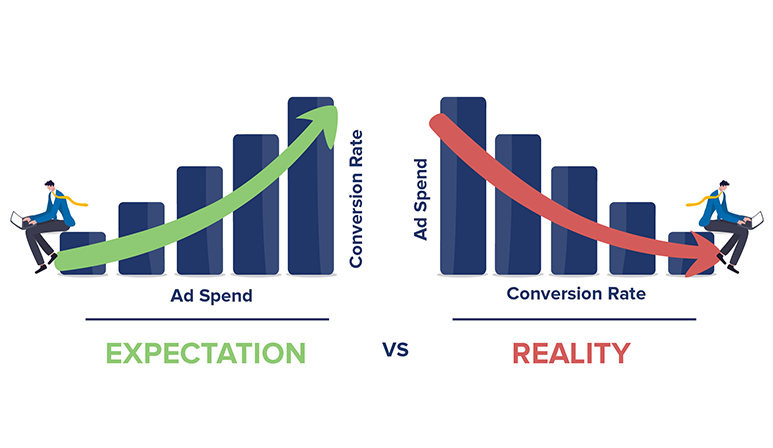
Recent Conversion Logix data showed that while predictive ads could improve click-through rates, the conversion rates (lead-to-lease) weren’t significantly better compared to more straightforward advertising methods.
Predictive Ads Struggle With Accuracy
One of the significant flaws with predictive ads is their reliance on historical data to forecast future behavior. Companies without access to substantial, high-quality data sets may find it challenging to create accurate predictive models.
“A primary challenge for multifamily and real estate marketers in predictive advertising is navigating its complex processes,” said Zach Shepard, principal at Braddock Investment Group Inc. “It involves collecting large amounts of data from multiple sources, analyzing it accurately, and using it to make predictions about potential customers or tenants. This can be a daunting task for those who are not familiar with data analysis and predictive modeling.”
Shepard believes many marketers may lack the necessary tools or resources to implement a successful campaign, which could result in inaccurate predictions or an ineffective strategy that does not yield the desired results.
“In some cases, the negative experience with predictive advertising may stem from unrealistic expectations,” said Shepard. “Marketers may expect immediate and drastic improvements in their marketing efforts without considering the time and effort required to collect and analyze data for accurate predictions.”
Even when sufficient data is available, predictive algorithms often overlook critical variables such as weather changes, shifting moods, or personal relationships — factors that can dramatically influence purchasing decisions in ways that a computer cannot easily anticipate.
“One of the primary issues that marketers face with predictive advertising is inaccurate targeting,” said Robert Fausette, owner of Revival Homebuyer. “Predictive algorithms use data analysis to predict which individuals are most likely to take a certain action, such as clicking on an ad or making a purchase. However, this data is not always accurate and can lead to targeting the wrong audience. This results in wasted advertising budget and lower conversion rates.”
Multifamily Executive reported that renter behavior can be highly volatile, especially in uncertain economic times, making predictive analytics less effective. Renters’ priorities shift based on changing market conditions, economic factors, and personal circumstances that predictive algorithms struggle to account for.
Additionally, predictive models are not static and must be updated continuously to remain relevant. As customer behavior evolves, a model that once worked may quickly become obsolete, leading to inaccurate predictions and wasted ad spend. A perfect example is the 2008 financial crisis, where models predicted mortgage customers would repay loans but failed to account for the collapse in U.S. housing prices.
“Our biggest challenge was getting good leads that actually turn into customers,” said Dino DiNenna, real estate broker at Hilton Head Realty Sales. “We tried a big ad campaign for our fancy apartments, and while lots of people clicked, not many ended up applying. It was frustrating to see all those clicks but so few real leads.”
In multifamily marketing, relying too heavily on outdated models can result in poor targeting, ineffective ad spend, and ultimately, lower ROI. While predictive advertising offers potential, its limitations make it less reliable compared to real-time data-driven approaches that adapt to renters’ immediate needs and behaviors.
In contrast, real-time data like live pricing updates and real-time availability are far more accurate because they reflect the current state of the market. BestEverCRE found that renters are more likely to convert when presented with up-to-date, transparent information such as pricing, unit availability, and immediate offers. This real-time approach provides actionable data, allowing for a more direct path to conversion without relying on speculative forecasts.

The Case for Simplicity: Live Pricing and Availability
One of the most compelling arguments against predictive ads is the simplicity and effectiveness of using real-time data. MultifamilyBiz highlighted that real-time availability and pricing updates directly impact conversion rates because they offer renters the information they need when needed.
By focusing on strategies that prioritize transparency — like showing what units are available right now or offering dynamic pricing — you create a more immediate sense of urgency and trust. Renters are far more likely to act when they know exactly what’s available, at what price, and when they can move in.
Ashley Gawley LRE, founder at Launch Real Estate, advises balancing data with understanding the hyperlocal market, property, and target audience. “For multifamily, look at lease-up rates, turnover, and demand for specific unit types — not just broad demographics,” Gawley said. “Consider hosting focus groups to gain qualitative insights into what’s really driving people’s housing decisions.”
Michael Yerardi, owner of Turning Point Home Buyers also faced challenges with predictive ads when the qds were not matching up with how residents felt about living at the properties. “We listened to what our residents had to say and made big changes,” Yerardi said. “For example, we promised to fix things within 24 hours, which made people much happier. By focusing on making life better for our residents — not just on flashy ads — we got 20% more people to stay with us.”
At Criterion.B, we’ve seen firsthand that simpler methods can outperform more complex, algorithm-based systems like predictive ads. Instead of trying to guess what renters might want in the future, we focus on delivering relevant, real-time information that speaks directly to their current needs.
The Fallacy of Predictability
Predictive advertising often promises that with enough data, marketers can forecast consumer behavior with precision. However, this is where the fallacy of predictability comes into play.

The desire for predictability can lead brands to rely on data and past performance to the point of stifling creativity and innovation. While predictive tools analyze everything from location to preferences, purchases, and search history, they ultimately fail to account for the messiness of human behavior. They can’t account for the emotional and personal factors influencing renter behavior.
Advertising has never been an exact science, nor should it aim to be. The idea that past consumer actions can reliably predict future behavior is flawed, and companies relying too heavily on predictive analytics will likely experience diminishing returns. Past performance does not predict future results. The repetition of predictable tactics inevitably leads to stagnation.
While data can provide insights, the art of advertising lies in its ability to engage, surprise, and break through the ordinary. It’s not about being predictable but about showing up in unexpected places and finding the human connection that resonates with people on a deeper level. Effective advertising is about understanding human behavior — not just the data sets it generates — and creating campaigns that reflect society’s complex, ever-changing nature.
Brands that rely solely on predictive ads risk becoming part of the ignorable 85% of ads that go unnoticed. By rejecting the predictable and embracing creativity, companies can produce advertising that stands out, breaks norms, and becomes part of the cultural conversation.
“We invested in a campaign aimed at prospective renters based on data analytics, but the audience we reached often didn’t align with our ideal tenant profile,” said Justin Landis, founder of The Justin Landis Group. “Many of the leads we received were unqualified, leading to a low conversion rate and wasted marketing dollars. We also faced challenges with the technology itself. The predictive models sometimes failed to account for local market nuances, resulting in ads that felt generic and disconnected from our community’s needs. This misalignment made the campaign feel less personal, and potential renters often overlooked our offerings.”
“The negative experience was frustrating, as we had high hopes for improving our lead generation,” Landis continued. “To pivot, we shifted our focus from purely data-driven advertising to a more integrated approach that included community engagement and personalized messaging. We began leveraging social media to connect with potential renters directly and gather feedback.” This approach enhanced the brand image of The Justin Landis Group. It allowed the company to tailor its offerings to meet audience needs better, ultimately leading to more successful marketing outcomes.
In the multifamily space, where renters’ needs and expectations evolve quickly, it’s essential to stay agile. Predictive ads, with their focus on past data, can leave marketers blind to new opportunities or shifts in renter behavior. Instead of leaning on predictive analytics, focusing on live data, real-time updates, and human-driven insights will allow brands to remain relevant and adaptable in a constantly changing market.
“We learned the hard way that keeping up with what residents want is crucial,” said Nick Stoddard, CEO at KC Property Connection. “We once ran ads aimed at young professionals, but it flopped because we didn’t consider families looking for bigger homes. After tweaking our approach to include families, we saw a big jump in leads and a 15% increase in occupancy rates. This experience taught us that regularly updating our marketing strategies is key to staying on top of changing resident needs.”
The Human Element: Why Predictive Ads Miss the Mark
While artificial intelligence (AI) is growing in digital marketing, its use in long-form content and predictive advertising isn’t without challenges. AI tools used in predictive analytics often simplify complex behaviors into data points, missing out on the nuances of human decision-making.
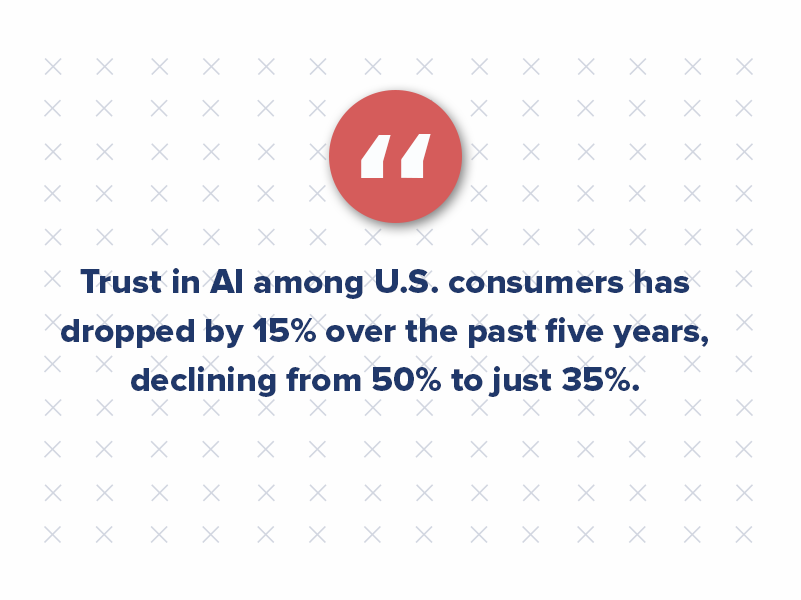
AI-driven predictive ads are not always effective in capturing the attention of renters seeking personalized experiences. Renters prefer authentic and relevant brands, which AI-driven, predictive models often struggle to achieve. Psychology Today reported that 70% of consumers spend more with authentic brands.
“The overreliance on AI in predictive advertising presents a challenge for us,” said Ryan Whitcher, founder and CEO of Harmony Home Buyers. “We initially embraced AI for our ad campaigns but soon realized it led to biased targeting and a 30% drop in qualified leads over three months. To address this, we implemented a hybrid approach, combining AI with human oversight, resulting in a 25% increase in qualified leads within two months and teaching us the importance of balancing technology with human expertise in our marketing strategies.”
Although 77% of advertisers have a favorable opinion of AI, consumer sentiment tells a different story. A 2024 report from the Edelman Trust Institute revealed that trust in AI among U.S. consumers has dropped by 15% over the past five years, declining from 50% to just 35%.
Also, a recent Neil Patel study found that content marketing incorporating personalization and emotional engagement outperforms data-driven, predictive ad strategies by 94.12%. Renters want to feel connected to the brand they’re considering, and predictive ads often fail to create that connection.
At Criterion.B, we prioritize building trust and emotional engagement through tailored content, real-time updates, and personal interactions. This approach builds lasting relationships, which is something predictive ads can’t do.
Why We Don’t Offer Predictive Ads
At Criterion.B, we’ve done our research. While predictive advertising may have its place in certain industries, the multifamily market demands a more dynamic, real-time approach. The unpredictable nature of renter behavior — combined with the increasing need for transparency and trust — means that predictive ads often fall short.
Rather than relying on speculative technology, we focus on proven methods: real-time pricing, availability updates, tailored content, and building genuine connections with renters. This approach doesn’t just drive traffic — it builds relationships. So while the allure of predictive ads is tempting, we’re committed to more personable (and reliable) strategies.

Here’s What You Need to Know About Content Length in 2024
With the rise of social media, short attention spans, and AI-generated content, many marketers question long-form content’s relevance. Is it still effective in today’s fast-paced digital landscape, or is it being overshadowed by bite-sized, easily digestible posts and videos?
The answer isn’t as simple as “long vs. short” — both have their place.
But long-form content is far from dead when it comes to SEO, audience engagement, and building authority. In fact, it’s more powerful than ever.
What Is Long-Form Content?
Before diving in, let’s clarify what long-form content is. Long-form content generally refers to blog posts, articles, videos, or other media that exceed 1,200 words or last more than 10 minutes. These pieces provide in-depth information, answering more complex questions and offering detailed insights. This type of content can include everything from blogs and eBooks to long-form video content on platforms like YouTube.
The Power of Long-Form Content for SEO
We often hear: “Nobody reads long-form content anymore.” Attention spans are shrinking — 20 years ago, people focused for about 2.5 minutes, and today, it’s down to just 45 seconds. In many industries, the average word count for content is dropping.
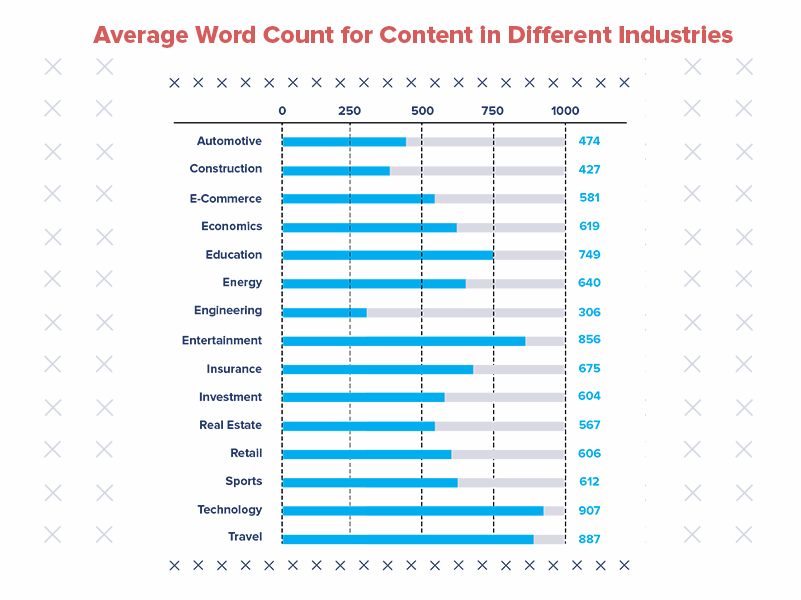
But here’s the thing: people will absolutely focus on long-form content if it’s about a topic they’re passionate about.
The rise of video essays on YouTube — many of which last over an hour — and TikTok testing 15-minute video uploads prove that audiences still crave depth and detail, as long as it’s compelling.
This engagement doesn’t happen by accident. Keeping people’s attention on long-form content takes skill. It requires understanding when to take a deep dive and when brevity is better. And this is where long-form content excels for SEO — it not only captures attention but holds it, offering value that resonates with readers.
Google’s John Mueller has pointed out that search engines favor content that thoroughly addresses user intent, and that’s where long-form content shines.
According to HubSpot, blog posts between 2,100 and 2,400 words perform best in organic search results. This length allows for in-depth keyword optimization and thorough topic exploration and provides ample opportunities for internal linking and backlinks.
Neil Patel’s research backs this up. His studies show that articles exceeding 2,000 words generate more backlinks and social shares than shorter pieces, proving that quality, detailed content remains critical for SEO success. Long-form content is especially powerful in building domain authority and helping websites rank higher on search engine results pages (SERPs), which leads to more traffic and conversions.
And according to Ahrefs data, most (91%) of all online content gets no organic traffic from Google. This isn’t necessarily because of poor heading structures or keyword stuffing; it’s often because the content doesn’t offer the depth or quality needed to attract meaningful engagement. Long-form content helps you overcome this by providing value.
Even as attention spans decline, long-form content remains an indispensable tool for SEO, driving sustained engagement, building trust, and ensuring that your content doesn’t just get read but ranks, too.
Does AI for Long-Form Content Work?
In today’s landscape, the use of AI for long-form content is becoming more common. AI tools like Gemini, Jasper, and ChatGPT can help generate ideas, structure articles, and even write large portions of long-form content. But while AI can assist with the creation process, it’s still essential to layer in human expertise, creativity, and insights to produce high-quality content.
AI is great for scaling content production, but it may struggle to deliver nuanced, audience-specific details that make content engaging. In short, AI can help create long-form content, but it shouldn’t fully replace human input, especially when your goal is to connect with readers and offer unique perspectives.
Long-Form vs. Short-Form Content: Which Performs Better?
It’s not a battle of long-form vs. short-form content; rather, both types of content have their place in a balanced marketing strategy.
The Case for Short-Form Content
While long-form content has undeniable benefits, short-form content still plays a crucial role in marketing strategies, particularly when capturing quick attention and providing easily digestible information. In a world of fleeting attention spans, short-form content — whether it’s videos, social media posts, or concise blog entries under 1,000 words — can quickly engage users and drive immediate action.
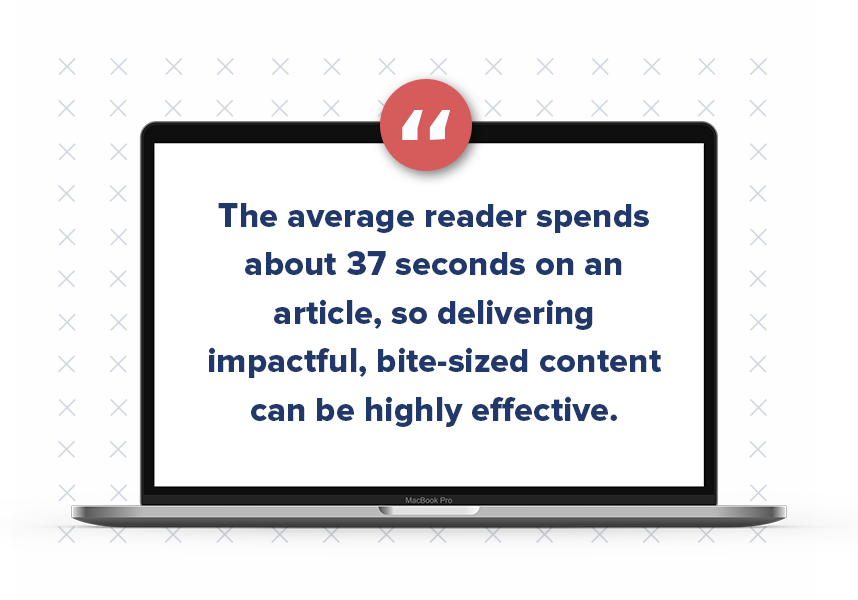
When it comes to written content, short-form blogging offers an opportunity to stay top-of-mind with your audience without overwhelming them. According to HubSpot, the average reader spends about 37 seconds on an article, so delivering impactful, bite-sized content can be highly effective, especially when users are looking for quick answers or need a fast overview. Blogs of 500-700 words, for instance, are perfect for addressing specific questions, ranking for targeted keywords, and keeping readers engaged without requiring a significant time investment. Listicles are a great way to pack in a lot of high-value content and specific keywords while making your content easily scannable, digestible, and succinct.
Short-form written content also works well for brand storytelling and building relationships with customers. Regular blog posts that are brief but packed with value can foster loyalty and ensure your audience keeps coming back for more. As the demand for faster information grows, more companies are using short-form blogs to drive email sign-ups, retargeting ads, and social shares.
The same principle applies to short-form video content, which has seen an explosion in popularity thanks to platforms like TikTok, Instagram Reels, and YouTube Shorts. These formats are perfect for audiences looking for quick entertainment or fast solutions to problems.

Vidico reports that video engagement drops after two minutes, declining from 70% to a little more than 50% between the 6- and 7-minute marks. Various reports state that videos 2 minutes long get the most engagement, making them perfect for platforms where users scroll quickly and want immediate gratification.
Social media audiences, especially younger demographics like Gen Z, are drawn to quick, snackable content that delivers instant value. Shorter videos are easier to consume, share, and engage with; they also align with shorter attention spans. Research also suggests shorter videos align with shorter attention spans and are more likely to sustain viewer attention.
The Case for Long-Form Content
Despite the rise of short-form media, long-form content is more effective for in-depth topics and SEO. When you answer complex questions or provide comprehensive guides, your content is more likely to attract links, shares, and higher engagement over time.
The ideal blog length has always been a moving target. At one point, the wave of 750-word posts dominated the landscape, but as content marketing matured and competition grew, blog posts expanded to over 2,500 words to offer more comprehensive, valuable insights. This trend was further fueled by strategies like the SEO skyscraper technique, where longer content aimed to outperform competitors and earn backlinks. It wasn’t uncommon for articles to exceed 3,000 words, and many thought leaders (Criterion.B included) advocated for more in-depth content to meet rising expectations.
In fact, research supported the push for longer content. HubSpot found that the ideal blog length fell between 2,100 and 2,400 words. Similarly, Semrush revealed that articles over 3,000 words generated 138% more search traffic.

However, with the surge of AI-generated content and the influence of the “TikTok Effect,” audiences now crave content that gets to the point faster. Today’s ideal length tends to hover between 1,500 and 2,000 words, striking a balance between depth and brevity. Neil Patel agrees, stating that the ideal content size is smaller now and quicker to reach the point. The key takeaway is that while word count still matters, quality and value are now the real metrics of success.
The performance of long-form video content also varies depending on the topic shared. On platforms like YouTube, longer videos (10 minutes or more) tend to rank higher in search results and generate more ad revenue. YouTube’s algorithm favors long-form video content because it keeps users on the platform longer, increasing engagement metrics. Some of the best long-form content on YouTube includes educational videos, detailed product reviews, and deep-dive tutorials.
For long-form video content, quality still matters. It’s not just about the length — it’s about how effectively the video engages, educates, or entertains your audience. A well-produced, long-form video can dramatically boost your channel’s visibility and lead to higher engagement, especially if paired with the right SEO strategies.
How Long Should Your Content Be?
So, what is considered long-form content, and how long should your content really be? The answer depends on your goals:
- For SEO: Articles between 2,100 and 2,400 words perform the best, according to HubSpot.
- For Engagement: Longer blog posts (around 3,000 words) and long-form video content (10+ minutes) are ideal for creating in-depth, shareable pieces that drive traffic.
- For Social Media: Short-form content (under 2 minutes for videos, under 1,000 words for posts) tends to get the most engagement, particularly on platforms like Instagram and Twitter.
- For Lead Generation: Both long and short content can be effective, but long-form content excels in building trust and nurturing leads over time.
The Verdict: Long-Form Content Is Here to Stay
Is long-form content dead? Absolutely not.
In fact, it plays a critical role in building brand authority, improving SEO, and driving qualified leads. However, it’s essential to integrate short-form content as well, especially for social media engagement and brand visibility.
The key is balance. Create a mix of long-form vs. short-form content that caters to different platforms and audience preferences. Use long-form content to dive deep into topics, improve SEO, and establish authority, while short-form content can be used for brand awareness and quick engagement.
Whether it’s a 3,000-word article, a detailed case study, or a short, snappy video, content that delivers real value will always have a place in your marketing toolbox. So, while shorter attention spans might drive the demand for short-form content, long-form content isn’t going anywhere — and it’s still a crucial part of a well-rounded marketing strategy.
Proven Marketing Strategies From Industry Leaders You Can Start Using Today
Marketing can sometimes feel like a game of trial and error, but a few tactics consistently hit the mark.
We’ve chatted with 16 industry pros who’ve nailed down the strategies that work, from the power of cause marketing to the smart use of content repurposing.
Here’s a look at the marketing tactics these experts can’t live without — and why they’re so effective.

1. Champion Cause Marketing
One marketing strategy example that has shown immense success is cause marketing. Patrick Beltran, Marketing Director at Ardoz Digital, explains that this approach involves partnering with nonprofit organizations and charities to support meaningful causes. By aligning your multifamily brand with a cause, you add a human element to your marketing efforts, significantly boosting consumer perception and engagement.
“Consumers genuinely feel good about their purchases when they know their money is helping provide essentials like shelter, food, or other support to those in need,” says Beltran. The key to success with cause marketing is choosing a cause you are passionate about, as this authenticity drives better results for your campaigns.
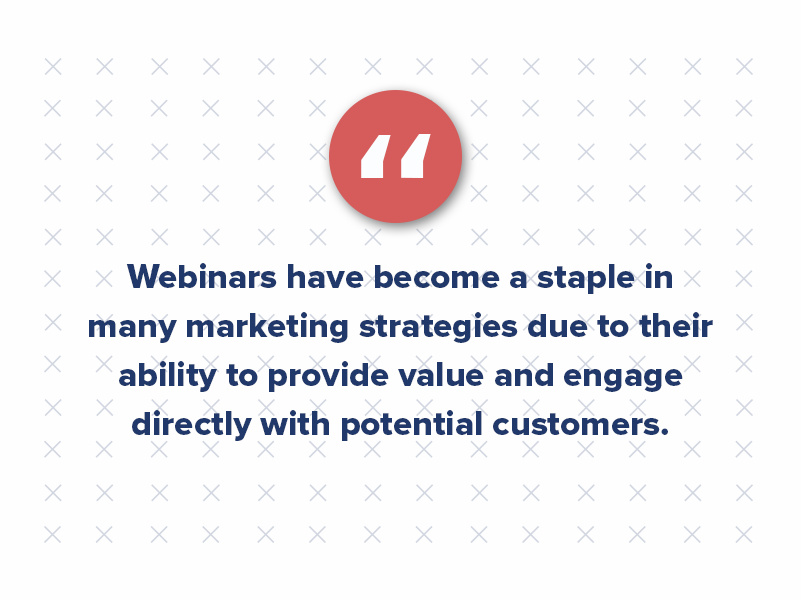
2. Host Value-Packed Webinars
Webinars have become a staple in many marketing strategies due to their ability to provide value and engage directly with potential customers. Rohit Vedantwar, Co-founder and Director at Supramind.com, highlights the effectiveness of this tactic by sharing how his team’s webinars led to a 45% increase in qualified leads and a 30% rise in product trials within six weeks.
“Webinars position our brand as a thought leader while fostering a sense of trust and authority with our audience,” says Vedantwar. By offering actionable insights and detailed product demos, webinars attract participants and drive conversions by addressing the specific needs of your audience.
3. Segment Newsletters by Interest
Personalization in marketing is crucial, and one way to achieve this is by segmenting newsletters based on subscriber interests. Meaghan Maybee, Marketing Communications Specialist at pc/nametag, shares how her team’s segmented newsletters have led to higher open rates, click-through rates, and lower unsubscribe rates.
“Our marketing team creates multiple newsletter types according to a subscriber’s unique interests,” says Maybee. This approach ensures that the content delivered is relevant to where the subscriber is in their buyer’s journey, making them more likely to engage with the emails and ultimately convert.
4. Nurture Leads with Email Campaigns
Email marketing remains one of the most effective ways to nurture leads and build relationships with potential customers. Randy Speckman, CEO at Randy Speckman Design, swears by nurturing email campaigns, sharing how a seven-email drip campaign for an online course launch significantly increased sales on launch day.
“Email nurturing works because it builds familiarity and trust over time,” says Speckman. The key to success with email marketing campaigns is providing real value in each message, which helps establish your brand as an authority in your field and encourages recipients to take action when the time is right.
5. Present at Industry Events
Industry events offer a unique opportunity to showcase your expertise and connect with potential clients face-to-face. Nicole Farber, CEO of ENX2 Legal Marketing, shares how presenting at law schools and marketing conferences has led to multiple new clients and substantial new business.
“Presenting in front of audiences allows me to showcase my knowledge and expertise,” says Farber. By establishing yourself as a thought leader and providing valuable insights, you can generate leads and build credibility in your industry.
6. Create In-Depth Content Guides
Content marketing is a powerful tool for establishing your brand’s authority and driving qualified leads. Josh Cremer, CEO and Creative Director at Redfox Visual, shares how an in-depth guide on local SEO best practices significantly increased qualified leads for his agency.
“Content works because it establishes your expertise, builds trust, and provides value to readers,” says Cremer. In-depth content guides address key concerns and questions that your audience may have, positioning your brand as a go-to resource in your industry.
7. Optimize Paid Social Media Ads
Paid social media advertising allows you to reach your target audience with precision and scale your marketing efforts. Jeff McGeary, Founder & CEO, PracticeVIP LLC, shares how paid social media ads have driven substantial new revenue for his clients.
“For small practices especially, paid social advertising is a game-changer,” says McGeary. By targeting your ideal customers and crafting relatable messaging, you can generate high-quality leads and achieve a significant return on investment.
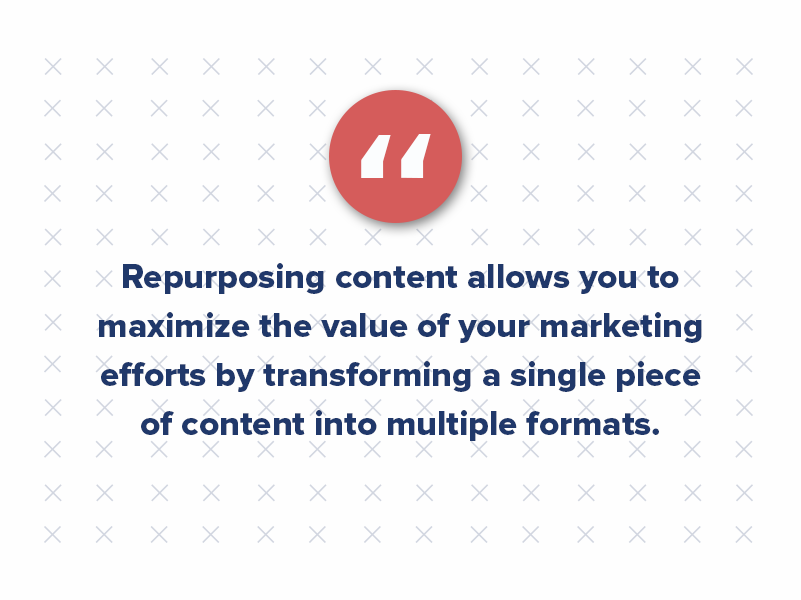
8. Maximize Reach with Content Repurposing
Repurposing content allows you to maximize the value of your marketing efforts by transforming a single piece of content into multiple formats. Vaibhav Kakkar, CEO of Digital Web Solutions, highlights how his team’s content repurposing strategy led to increased reach and engagement.
“We maximize the value of our content by transforming a single piece into multiple formats,” says Kakkar. This approach ensures that your core message reaches different audience segments, making your marketing strategies more efficient and impactful.
9. Personalize Your Email Marketing Campaigns
Personalization is key to effective email campaigns. Lauren Gast, Marketing Director at Truck Driver Institute, shares how personalized email campaigns have increased inquiries for their CDL training programs.
“It works because it creates a one-to-one and relevant relationship with the audience,” says Gast. By addressing the specific needs and interests of your audience, personalized emails can significantly boost engagement and conversion rates.
10. Showcase Customer Testimonials
Customer testimonials and case studies are powerful tools for building trust and credibility with potential clients. Tim Woda, Founder at White Peak, shares how leveraging customer testimonials led to an increase in leads and inquiries.
“Real-life success stories resonate with prospects far more than generic marketing messages,” says Woda. By showcasing the tangible benefits of your services through customer testimonials, you can convert leads into customers more effectively.
11. Produce Engaging Explainer Videos
Visual content, especially videos, is a highly effective way to communicate complex messages quickly and engagingly. Kevin Watts, President and Founder at Raincross, shares how an explainer video increased qualified leads by over 30% within the first month.
“Videos work because they can convey a complex message in a short, easy-to-understand format,” says Watts. Engaging visual content can capture the attention of your audience and drive them to take action.
12. Leverage Strategic Partnerships
Strategic partnerships allow you to tap into an established network and community, providing access to high-quality leads. Robert P. Dickey, President and CEO at AQ Marketing, shares how strategic partnerships have driven significant lead generation for his clients.
“Strategic partnerships work because you’re leveraging an established network and community that already trusts your partner,” says Dickey. By creating mutually beneficial partnerships, you can gain exposure to new audiences and drive organic growth.
13. Utilize User-Generated Content
User-generated content (UGC) adds authenticity to your marketing tactics by showcasing real customer experiences. Kam Talebi, CEO of Gigli, shares how utilizing UGC has improved their ROI and strengthened connections with customers.
“UGC is more effective than brand-generated content because it showcases the experiences that other people are having with our products,” says Talebi. Incorporating UGC into your marketing strategy can build trust and engagement with your audience.
14. Organize Industry-Specific Events
Industry-specific events directly engage your target market, making them a highly effective marketing tactic. Amar Ghose, CEO of ZenMaid, shares how organizing the “Maid Summit” significantly boosted brand awareness and generated high-quality leads.
“By bringing people together and providing valuable content, we not only increased our brand visibility but also maintained a steady flow of leads,” says Ghose. Organizing events allows you to connect with your audience on a personal level and establish your brand as a leader in your industry.
15. Tailor Marketing to Generational Segments
Understanding the unique preferences of different generational segments is crucial for crafting personalized marketing strategies. Farnam Elyasof, Founder of Flex Suits, shares how tailoring campaigns to Millennials and Gen X has optimized engagement and boosted leads.
“Being aware of generational nuances ensures that you are using the right marketing strategies to boost your leads and revenue,” says Elyasof. By addressing the specific needs and preferences of each generation, you can create more effective and relevant campaigns.
16. Offer Referral Incentives
Referral incentives are a cost-effective way to amplify word-of-mouth marketing and drive organic growth. John Cammidge, Handyman at Handyman John, shares how offering a 10% discount for referrals significantly boosted revenue and client loyalty.
“Referral incentives leverage trust — clients trust their friends’ recommendations,” says Cammidge. By rewarding existing clients for referring new customers, you can create a cycle of consistent growth and client retention.
Championing Success Through Strategic Marketing Tactics
These marketing tactics, championed by industry thought leaders, demonstrate the power of strategic, personalized, and value-driven approaches. Whether through cause marketing, personalized email campaigns, or organizing industry events, these marketing strategy examples have proven their effectiveness in driving results across various sectors. With these marketing tactics, you can enhance engagement, build trust, and achieve long-term success for your organization.

Content Marketing: Your Multifamily Brand’s Secret Weapon in Tough Times
Let’s be honest — everyone’s talking about content marketing these days, but it’s not just another buzzword when it comes to multifamily. It’s your secret weapon for building an outstanding multifamily brand identity.
Sure, multifamily inbound marketing isn’t exactly groundbreaking, but here’s the thing: it’s often misunderstood. It’s not just about chasing leads — it’s about crafting a strong online presence, boosting brand awareness, and making your property the go-to choice in a crowded market.
Why Content Marketing Should Be Top Priority (Even When Budgets Are Tight)
In a year where the mantra is “stay alive until 2025,” it’s tempting to pull back on marketing budgets and wait for the market to bounce back. However, cutting content marketing might be a mistake that could cost you more in the long run. Inbound marketing remains one of the most cost-effective strategies out there, offering a high return on investment even when budgets are tight.
Consider this: content marketing campaigns cost 62% less to launch and maintain than other marketing campaigns. Despite the lower cost, the impact is significant.
For instance, 51% of content consumption comes from organic search, meaning your content can continue to draw in traffic and build brand awareness without requiring constant ad spend. Additionally, content marketing is responsible for increasing lead generation according to 74% of companies — proof that it’s an investment worth maintaining.

Even in tough economic times, multifamily inbound marketing provides a sustainable way to stay visible and relevant. Over a third of businesses have recognized this, allocating 10% to 29% of their budget to content marketing. High-quality content is also the most effective SEO strategy for 59% of B2C marketers, underscoring its importance in driving organic traffic and improving search engine rankings.
Moreover, the role of inbound marketing extends beyond just budget efficiency. It’s about maintaining your brand’s presence in a competitive market. With 78% of people using social media as their primary way to find information on brands, having a consistent content strategy helps ensure that your brand remains top of mind for potential customers. And businesses that integrate link-building strategies with their content marketing report a 45% greater success rate, highlighting how these efforts can amplify your overall marketing effectiveness.
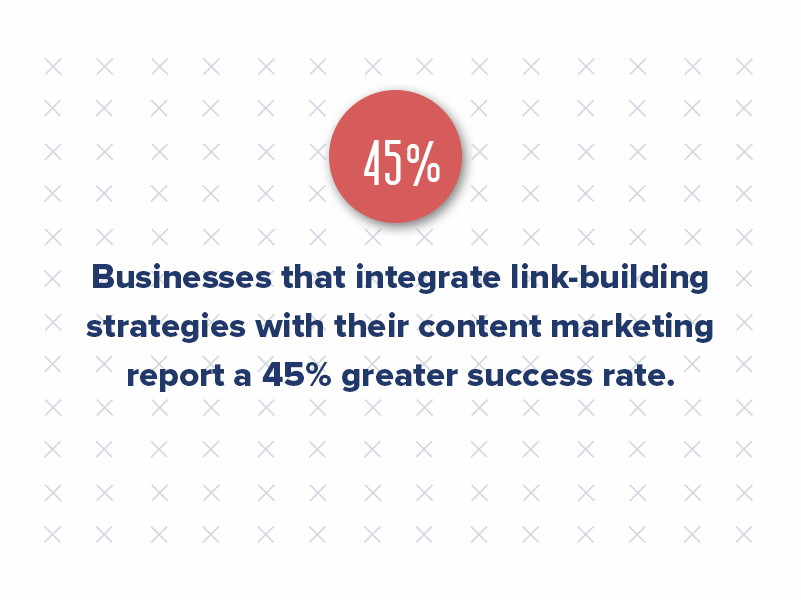
In-person events, webinars, email campaigns, organic social media platforms, and blogs are among the top-performing content marketing channels. Whether hosting a webinar or crafting a blog post, each piece of content contributes to your brand’s overall visibility and credibility.
So, while the market might be uncertain now, maintaining or doubling down on your inbound marketing efforts can position your brand for tremendous success when the economy rebounds.
Here are some additional tips for an effective content marketing strategy:
1. Start a Consistent Blogging Strategy
Blogging is a foundational element of inbound marketing that is crucial to building your brand identity. A well-maintained blog can significantly enhance your property’s visibility online. Here are some compelling reasons why:
- Increased Visibility: Websites with blogs have 434% more indexed pages, meaning they are more likely to appear in search engine results.
- Enhanced Trust: Blogs are rated as the fifth most trusted source for accurate online information.
- Brand Authority: Regular blogging helps establish your property as an authority in the multifamily industry, making it a go-to resource for potential residents.
Starting a consistent blogging strategy involves identifying the topics that matter most to your target audience and delivering content that addresses their needs and interests. This approach keeps your website active and helps build trust and credibility, essential components of a strong brand.
2. Tell Your Multifamily Brand Story
Every brand has a story to tell, and your multifamily property is no different. Your brand story is the narrative that encompasses your property’s values, mission, and the unique lifestyle it offers. Blogging and content creation are potent tools for sharing this story across various platforms, helping potential residents connect with your brand on a deeper level.
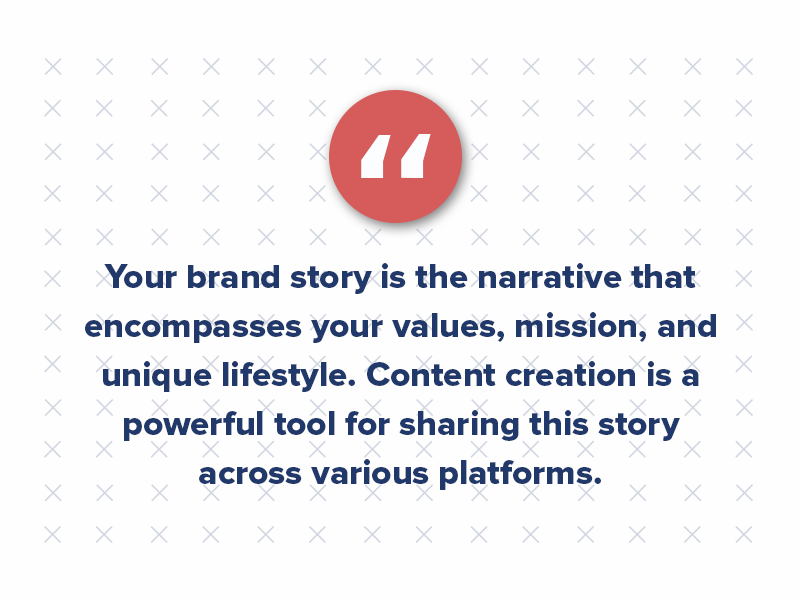
To effectively tell your brand story, consider it more than just marketing. It’s about creating an editorial vision that aligns with your brand’s identity. Whether through blog posts, social media updates, or video content, your storytelling should reflect the essence of your property and the experience it offers. This approach humanizes your brand and fosters a strong emotional connection with your audience.
3. Create Content That Resonates
Creating content that truly resonates with your audience requires a deep understanding of who they are and what they need. This is where a persona-driven strategy comes into play. By developing detailed resident personas, you can tailor your content to address your target audience’s specific pain points, desires, and lifestyle choices.
When creating content, it’s important to consider the entire customer journey. This involves crafting content that speaks to potential residents at every stage — from those just beginning their apartment search to those ready to sign a lease. By addressing the different stages of the renter’s journey — Awareness, Consideration, and Decision — you ensure that your content remains relevant and valuable, helping to build a lasting relationship with your audience.
4. Adopt a Persona-Driven Strategy
Understanding your audience is key to creating content that effectively builds your brand. A persona-driven strategy allows you to focus on your target residents’ specific needs and interests, ensuring that your content is always relevant and engaging.
Instead of trying to cover everything about your property, focus on what matters most to your audience. For example, if your target residents value sustainability, create content highlighting your property’s eco-friendly features. If your audience is primarily young professionals, focus on content that speaks to your property’s convenience and lifestyle benefits.
This targeted approach strengthens your multifamily brand identity and positions your property as the ideal choice for your target audience.
5. Maintain Consistency Across Platforms
Consistency is key to maintaining a robust multifamily brand identity. Whether it’s the tone of your blog posts, the imagery used in your social media, or the messaging on your website, everything should align with your brand’s identity. This uniformity ensures that your audience receives a cohesive message, reinforcing your brand’s presence and making it easily recognizable.
Utilizing tools like AMP Studio collateral templates can help maintain this consistency, allowing you to streamline your branding efforts across various channels. From floorplan sheets and brochures to email signatures and business cards, every piece of content should reflect your brand’s values and identity.
Why Outsource Your Content Marketing?
Outsourcing content marketing isn’t just a trend — it’s a strategic move that nearly half of all businesses embrace. In fact, 48% of content marketing is now handled by agencies or third-party companies. This approach allows businesses to leverage specialized expertise, particularly in graphic design, video production, and copywriting.

By outsourcing, you’re not just delegating tasks; you’re investing in the quality and effectiveness of your content. Consider this: 47% of outsourcing efforts focus on graphic design, ensuring that visuals are eye-catching and aligned with your multifamily brand identity. Meanwhile, 43% of businesses turn to experts for video design and animation, adding dynamic, engaging content to their marketing mix. And when it comes to articulating your brand’s message, 37% of content marketing efforts rely on professional copywriters to craft compelling narratives.
Outsourcing these creative tasks to an agency like Criterion.B can free up your time while ensuring your content is crafted with the expertise needed to resonate with your audience truly. With a team that understands the nuances of the multifamily market, we can help you build and maintain a strong, cohesive multifamily brand identity that stands out in a competitive landscape.
Make Your Brand Memorable, Not Just Noticeable
Think of multifamily inbound marketing as the cornerstone of your brand’s identity. It’s not just about getting noticed — it’s about making sure people remember you for all the right reasons. By staying consistent, you’re not just building a brand; you’re creating a lasting impression that keeps your property top of mind.
In a sea of options, being the property that stands out isn’t just nice — it’s necessary. So, invest in your content, keep it authentic, and watch as your brand is not only recognized but respected.
Here Are the Missing Pieces in Your Multifamily Marketing Plan
Content marketing in the multifamily industry has long been an afterthought — nice to have but not essential. But as multifamily marketing trends shift, it’s clear that how we create content can no longer be an experiment or an afterthought. It’s the strategy.
Property management teams relied on static flyers, cookie-cutter ads, and generic website pages for years to engage with prospective renters. Today, that’s simply not enough.
Multifamily inbound marketing is about meeting renters where they are — searching, scrolling, and researching online. That means an effective multifamily content marketing strategy must be data-driven, omnichannel, and hyper-relevant to a specific multifamily buyer persona.
At Criterion.B, we’ve worked with multifamily properties nationwide to refine their marketing campaigns and adjust to modern renters’ expectations. And if there’s one takeaway from the last five years, it’s this:
If your multifamily brand identity isn’t aligned with the multifamily brand experience, you’re leaving leads (and leases) on the table.
What Residents Expect From Your Multifamily Content Marketing
Gone are the days when content was just a blog and a few Google Ads. Modern multifamily marketing goes beyond writing informative blog posts — it’s about crafting an experience that resonates with a target audience. It’s not enough to rank on Google; you need to convert the traffic once people land on your page.
Think about it: When potential residents search for “best apartments near downtown,” they don’t just want a list of properties. They want reviews, neighborhood insights, community engagement, and compelling content that reassures them they’re making the right choice. That’s why search engine optimization (SEO) alone isn’t enough. Multifamily SEO has to work in tandem with high-quality, engaging content that educates, informs, and builds trust.
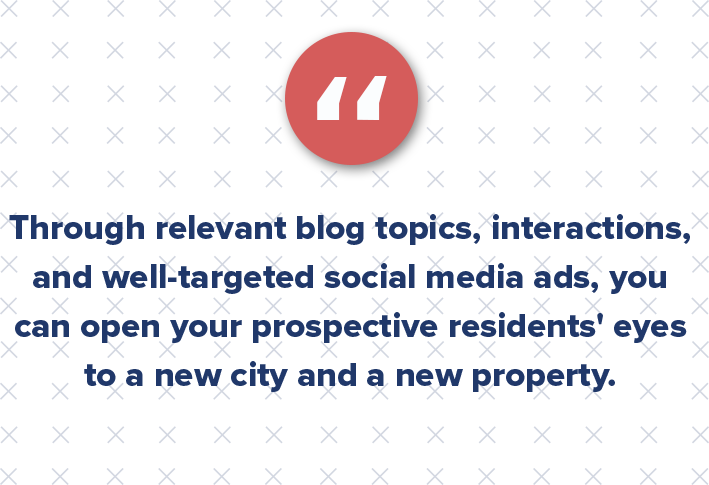
Why Is Content Marketing Still Undervalued?
The biggest misconception in multifamily inbound marketing is that content isn’t a revenue driver. Some property management teams still consider it an expense rather than a core lead generation strategy. But the reality is that content isn’t just about rankings — it’s about influence.
Content builds trust. A strong Google Business Profile with detailed posts, FAQs, and resident reviews boosts credibility. Informative videos and testimonials on a social media platform increase engagement.
A well-optimized SEO strategy ensures your property is found before competitors. And most importantly, content helps renters see themselves in your community — before they even visit.
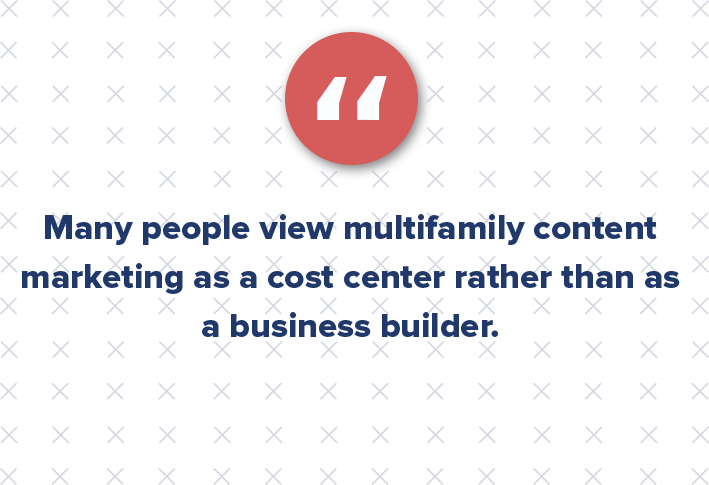
How to Build a Content Marketing Plan That Works
A successful content marketing strategy requires more than a few blog posts. Here’s what multifamily properties need to prioritize:
1. Know Your Audience, Build Your Persona
Your multifamily buyer persona determines everything: messaging, branding, social media marketing, and advertising strategy. Are you targeting young professionals, downsizing baby boomers, or remote workers? Your content must speak to their unique needs and expectations.
2. Leverage Multiple Channels
Your audience isn’t just on your website — they’re across multiple social media platforms, browsing on Google, and checking online reviews. Effective multifamily content marketing should be spread across organic search, email, video, and social media.

3. SEO + Content = Visibility
Writing great content is useless if no one sees it. Search engine optimization (SEO) is critical for long-term success. Whether optimizing for Google Business Profile, crafting data-driven blogs, or improving site structure, every piece of content should be working to increase organic traffic.
4. Prioritize Value, Not Just Promotions
Your marketing plan shouldn’t just push lease specials — it should position your property as a go-to resource. Think about content like:
- Apartment living tips
- Community guides
- Moving checklists
- Resident success stories
- Neighborhood spotlights
5. Social Media Is More Than Just Posting
Social media marketing for multifamily isn’t just about posting floorplans. It’s about storytelling. A smart multifamily branding agency will craft campaigns highlighting the multifamily brand experience, showcase resident testimonials, and engage with followers through interactive content.

Essentially, you must create great content and then adapt it across platforms. For example, a single blog post can be shared on Twitter with a snappy headline, extended to Instagram with an engaging image, and adapted to a shareable infographic.
While social networks continue to grow more visual, multifamily marketing professionals will have the opportunity to be wildly creative in their cross-platform applications.
How Do You Justify the ROI of Multifamily Marketing?
If you’re approaching your content marketing strategy correctly, you can tie your efforts directly to ROI — both qualitative (brand-focused) and quantitative (business-focused).
Let’s take Zillow, for example. Its content strategy achieves highly targeted brand goals (i.e., establishing Zillow as a storyteller within real estate) and business goals (i.e., driving traffic to its website to increase conversions). It should work the same way for your multifamily property:
- What multifamily brand goals are you trying to achieve?
- What business goals are you trying to achieve?
No matter what your business is, your content marketing actions should be driven by the questions above. Only then can you develop a roadmap with a purpose and measurable objectives.
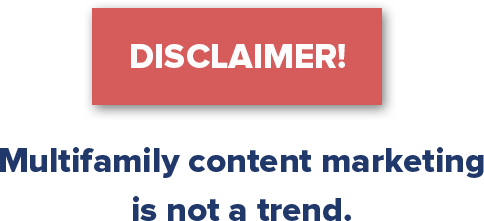
Are You Ready for the Future of Multifamily Marketing?
We’re at an inflection point. Inbound multifamily marketing is evolving, and renters expect more. They don’t just want listings; they want an experience. The brands that succeed will be the ones that invest in content — not as an afterthought, but as the foundation of their lead generation strategy.
If your multifamily marketing still feels stuck in the past, it’s time to rethink how you connect with potential residents. Content isn’t just king anymore — it’s the entire kingdom.

Beyond the Booth: Creative Ways to Network at Multifamily Events
We’ve had clients ask us more times than not, “How do I get in front of multifamily?” “How do I market my business beyond my website and digital ads?”
The multifamily landscape is booming with new residents flooding the market and competition fiercer than ever. Whether you’re a seasoned property management firm or a disruptive proptech startup, standing out in this crowded space requires a strategic approach.

To grab the attention of multifamily decision-makers, you need to be where they are and speak their language.
Here are 10 proven ways to put your brand in front of the right people in the multifamily industry:
1. Partnering With Local Syndicators
Syndicators serve as the bridge between real estate investors and multifamily properties. By forging partnerships with these key players in your local market, you can gain valuable access to their network of potential clients. Offer resources, co-host educational events, or sponsor their newsletters to build brand awareness and trust within their investor pool.
2. Leverage Apartment Association Events
Local apartment associations host regular events and conferences that attract property managers, owners, and industry professionals. Participating in these events, like the Apartment Association of Greater Dallas, presents a fantastic opportunity to network, showcase your solutions, and connect with decision-makers directly. Attend workshops, volunteer for committees, or even sponsor the event to maximize your visibility.
3. Don’t Miss National Trade Shows
Major industry events like the National Apartment Association’s Apartmentalize offer unparalleled networking opportunities. Having a well-designed booth with engaging presentations is crucial. But don’t underestimate the power of pre-show outreach and post-event follow-up to nurture those initial connections.
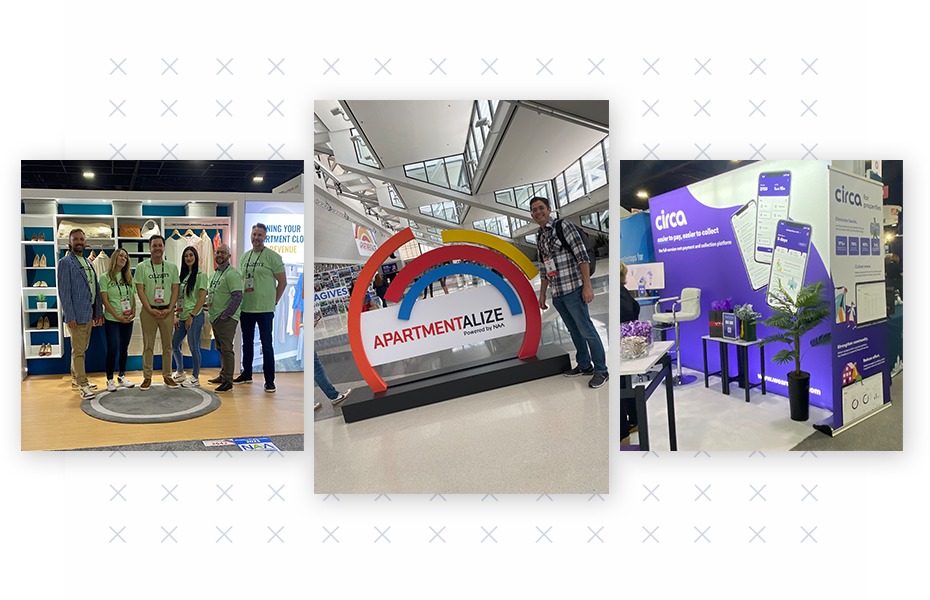
4. Become a Thought Leader Through Content Creation
Multifamily professionals are busy, but they’re hungry for valuable insights. Establish your brand as a trusted resource by contributing informative articles to local and national publications relevant to the industry. Reach out to the Apartment Associations you’re connected with or publications like Multifamily Insiders and Forbes. Offer fresh perspectives, share data-driven insights, and showcase your expertise through compelling content.
5. Network Beyond Events
Networking doesn’t stop at conferences. Join online forums and social media groups frequented by multifamily professionals. Participate in discussions, answer questions thoughtfully, and be a helpful resource.
Attend industry meetups, join local business associations, and don’t hesitate to talk wherever you encounter potential clients. For example, many cities have a monthly “Business Exchange” or “Women in Commercial Real Estate” group you can join, or you can join hundreds of Facebook and LinkedIn groups relevant to your industry.

Here are a few of our favorite multifamily LinkedIn groups:
- Apartment Innovation and Marketing
- Commercial Real Estate Pros
- Commercial Real Estate Referral Network
- Multifamily Executive
- Residential Property Management Professionals
- Multifamily Insiders Community
6. Partner With Property Management Software Providers
Property management software companies have a vast network of users within the multifamily industry. Explore co-marketing opportunities with these software providers. Develop integrations with their platforms, co-host webinars, or offer joint content resources that address common pain points for property managers.
7. Utilize Online Marketing Strategies
Today, a robust online presence is critical. Invest in search engine optimization (SEO) to ensure your website ranks high when multifamily professionals search for relevant solutions. Run targeted social media campaigns on LinkedIn and Facebook to connect with decision-makers. To build a nurturing campaign, offer valuable content like e-books, whitepapers, and webinars in exchange for email addresses.
8. Leverage Customer Success Stories
Don’t underestimate the power of showcasing your success. Highlight positive client testimonials on your website and social media profiles. Consider creating case studies that showcase the quantifiable results you’ve achieved for clients within the multifamily industry.
Want to see some examples? Check out our most recent case studies on our Resource page here.
9. Participate in Industry Awards
Winning industry awards adds credibility and prestige to your brand. Research relevant awards offered by apartment associations, industry publications, or even proptech communities. Compiling a strong case study and submitting your work demonstrates your commitment to excellence and innovation, gaining the attention of potential clients. Even if you don’t win, being involved in these communities might offer you a future opportunity to participate as a judge in these competitions.
10. Build Relationships, Not Just Transactions
It’s important to remember that the multifamily industry is built on relationships. Focus on fostering genuine connections with potential clients. Listen to their challenges, understand their pain points, and tailor your solutions to their needs. By demonstrating genuine care and expertise, you’ll build trust and long-lasting partnerships that fuel your success in the competitive multifamily market.
Implementing these strategies will create a multi-pronged approach to getting in front of multifamily decision-makers. Consistency is key. Continuously put yourself out there, provide value, and cultivate relationships within the multifamily industry. Establishing yourself as a trusted resource and thought leader will attract the right clients and pave the way for your long-term growth and success.

Must-Have Marketing Tools for Building Your Online Empire
The marketing technology landscape (MarTech) can feel overwhelming. With countless tools vying for your attention, it’s easy to get lost in the “nice-to-haves” and miss the essentials for building a strong online presence and fostering meaningful engagement.
Below, we explore key tools to enhance brand awareness, audience interaction, and online visibility.
Remember, a well-defined marketing strategy is the foundation for success. These tools will amplify your efforts, not replace them.

Before diving in, consider your resources. Partnering with a multifamily marketing agency grants access to their MarTech stack, which often includes email marketing, SEO, social media management tools, and more. Utilize their expertise and potentially save on individual tool subscriptions.
1. Content Management System (CMS
Gone are the days of developer-dependent websites. User-friendly CMS platforms like WordPress empower you to add content, edit, and manage your website easily, even without coding knowledge. This translates to cost savings and frees you from relying on IT for basic updates.
But a website is more than just a digital brochure. Regularly publishing valuable content establishes your brand as an industry authority, attracts organic search engine traffic, and subtly pre-qualifies genuinely interested visitors. WordPress offers a vast library of plugins for seamless integration with other MarTech tools like Mailchimp (email marketing tools), WooCommerce (e-commerce), and Google Analytics (web analytics).
2. Unveiling Audience Insights With Google Analytics
Google Analytics, a free web analytics platform, illuminates the who, what, and why behind your website traffic. It reveals which marketing channels drive lead generation, their behavior on your site, and their actions (e.g., page views and downloads). Take your analysis further by setting up custom events and goals to track specific user actions like content downloads, form submissions, or video views. This data empowers you to tailor your content and marketing strategies for maximum impact and return on investment.

3. Social Media Management Tools
Platforms like Hootsuite or Buffer streamline social media scheduling, allowing you to manage multiple accounts and ad campaigns and post consistently across various platforms. This keeps your brand buzzing and fosters audience interaction.
Tools like Brandwatch or Sprout Social can also help you monitor online conversations about your brand and industry trends. This allows you to identify areas for improvement, address customer concerns, and participate in relevant conversations.
Remember, the ideal MarTech stack is a blend of tools that empower your unique marketing efforts.
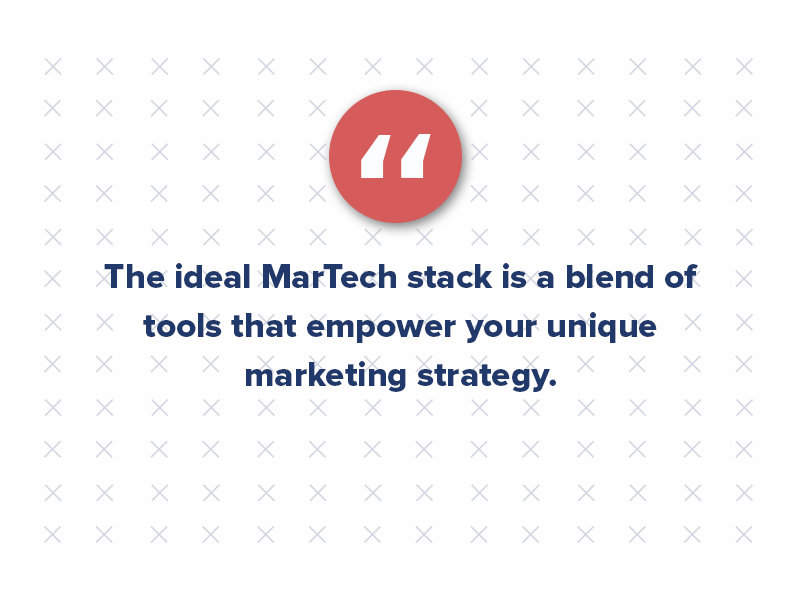
4. Graphic Design Tools
Eye-catching visuals are essential for grabbing attention and boosting engagement. Design tools like Adobe Creative Suite (powerful but complex), ProCreate (ideal for artists on iPads), or Canva (user-friendly and budget-conscious) empower you to create professional-looking social media graphics, infographics, and other visual content.
5. Search Engine Optimization (SEO)
Technical SEO ensures your website adheres to search engine guidelines, making it easily discoverable by potential customers. Tools like Semrush, SEO Moz, and Ahrefs offer website audits, keyword research, and competitor analysis, helping you optimize your site for relevant search terms. By improving your search ranking, you organically attract a wider audience interested in what you offer.
6. Nurturing Relationships With Email Marketing Tools
Building lasting connections with your audience is key to brand loyalty. Email marketing tools let you share valuable content, announce promotions, and keep your brand top-of-mind. While standalone tools like Mailchimp exist, marketing automation platforms like Go High Level, SharpSpring, and HubSpot often include built-in email marketing functionalities. These tools allow for automated email sequences and email campaigns that nurture and keep multifamily leads engaged over time.

7. Webinars and Online Events
Platforms like Zoom or GoToWebinar allow you to host live events, product demos, or industry discussions. This is a fantastic way to connect with your audience in real time and showcase your expertise.
8. Marketing Automation Software
Marketing automation software takes your MarTech toolbox to the next level. These tools automate repetitive tasks, allowing you to focus on high-level strategy, marketing campaigns, and nurturing relationships.
Here’s how they can benefit your business:
- Automated Workflows: Create pre-defined sequences for nurturing leads, sending personalized messages based on user behavior, and automating follow-up emails. This frees up your time for more strategic initiatives.
- Lead Scoring and Segmentation: Assign scores to leads based on their engagement level and website activity. This helps prioritize leads and personalize communication for maximum impact.
- Omnichannel Marketing: Deliver targeted messages across multiple channels, including email, social media, and SMS, for more cohesive brand and customer experiences.
When selecting marketing automation software, a property manager should budget, team size, and marketing goals for the property. Look for features that align with your needs and offer scalability as the property grows.
Propel Your Business Forward With MarTech
The MarTech landscape is vast, and the “best” tools depend on your needs and budget. Start by focusing on a core set of tools that align with your strategy and gradually expand your multifamily marketing channels as your online presence evolves. Leveraging these resources allows you to establish a strong online brand, cultivate a loyal audience, and propel your business forward.

Expert Tips to Avoid Property Management Nightmares
The life of a property manager is a juggling act. You’re responsible for everything from resident relations and maintenance to budgeting and legal compliance. It’s no wonder that mistakes can happen, especially for new property managers or those managing a growing portfolio.
The good news is that by identifying common pitfalls, you can take proactive steps to avoid them.
Here’s a look at some of the biggest mistakes property managers make, along with actionable tips to keep your properties running smoothly:
1. Failing to Properly Screen Residents
A bad resident can be a nightmare for any property manager. They can damage the property, disrupt other residents, and drain your time and resources.
The fix? Implement a thorough screening process that includes credit checks, rental history verification, employment verification, and reference checks. Don’t skip this crucial step — a bad resident can cost you far more in the long run than a thorough screening process ever will.

2. Not Having Clear Lease Agreements
A well-written lease agreement protects both you and your residents. It should clearly outline the rights and responsibilities of both parties, including rent amount, due dates, late fees, pet policies, maintenance procedures, and termination clauses.
The fix? Use a standardized lease agreement that has been reviewed by a lawyer. Keep it updated with any local or state regulations that may change.
3. Letting Maintenance Requests Pile Up
Prompt and thorough maintenance is a cornerstone of successful property management. Like addressing resident complaints quickly, addressing maintenance requests swiftly is essential to avoid a cascade of negative consequences.
Here’s why prioritizing maintenance is crucial:
- Protecting Your Investment: Regular maintenance plays a vital role in preserving the condition of your properties. Neglecting repairs can lead to further deterioration, decreased property value, and higher operating costs. Think leaky faucets that escalate to water damage or clogged gutters that lead to foundation issues. Addressing minor issues promptly saves you money in the long run.
- Resident Satisfaction & Safety: Living in a well-maintained property contributes significantly to resident satisfaction. Ignoring maintenance requests creates frustration and a sense of neglect. Prioritizing repairs ensures a safe and comfortable living environment for your residents.
- Reduced Liability: Letting maintenance issues linger can expose you to legal trouble. For instance, a slip and fall because of an unaddressed ice patch on the sidewalk could result in a lawsuit. By promptly addressing maintenance requests, you’re mitigating potential liability risks.
Here’s how to ensure your properties are well-maintained:
- Routine Inspections: Schedule regular inspections of your properties to identify potential problems before they become major issues. This could involve monthly walkthroughs or annual comprehensive inspections.
- Qualified Contractors: Develop relationships with qualified and reliable contractors who can handle various maintenance tasks. Verify references to confirm licensure and insurance. Oversee the quality and timeliness of their work to ensure efficient repairs.
- Budgeting for Maintenance: Don’t underestimate the importance of budgeting for maintenance and repairs. Factor in routine maintenance costs and a reserve fund for unexpected emergencies and major repairs. This ensures you have the resources readily available when needed.
- Communication Is Key: Like with resident complaints, keep residents informed throughout the maintenance process. Acknowledge their request promptly, explain the repair timeline, and provide updates if any delays occur. Open communication fosters trust and reduces frustration.
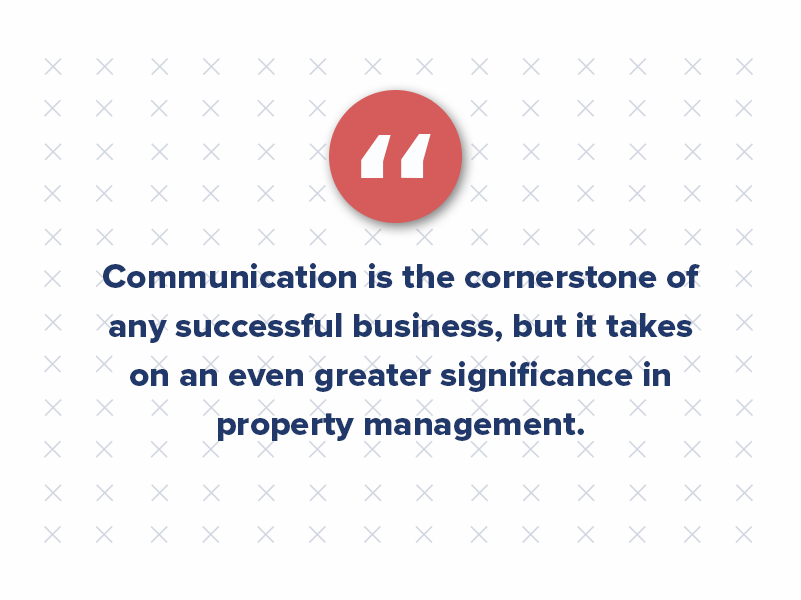
4. Poor Communication With Residents
Communication is the cornerstone of any successful business, but it takes on an even greater significance in property management. You’re constantly juggling interactions with a diverse group — your team members, property owners, residents, and vendors. When communication breaks down, it can lead to misunderstandings, conflicts, delays, errors, and ultimately, dissatisfied customers.
Here’s how to ensure smooth communication:
- Establish Clear Channels: Don’t leave your team and renters guessing how to reach you. Set up designated communication channels — email, phone calls, text messages, or online platforms like resident portals. Consistency is key — don’t make them chase you down across multiple platforms.
- Frequency & Transparency: Aim for frequent, transparent communication. Regular updates keep everyone informed and in the loop. Don’t be afraid to share both good and bad news promptly and honestly.
- Tailored Communication: A one-size-fits-all approach won’t work. Tailor your communication style to your audience. Use clear and concise language with residents, provide detailed reports to property owners, and foster open collaboration with your team.
- Feedback & Listening: Communication is a two-way street. Listen to your team and renters’ concerns, questions, and suggestions. Provide positive and constructive feedback to keep everyone motivated and on track. Respond promptly and professionally, demonstrating that their input is valued.
- Technology Advantage: Fortunately, technology is on your side. Utilizing property management software streamlines communication by centralizing information, automating tasks, and facilitating easy access for all parties involved. This reduces the risk of errors and keeps everyone on the same page, boosting overall efficiency.
- Building Relationships: Effective communication goes beyond simply sharing information. It’s about fostering trust and building strong relationships. Schedule regular team meetings to discuss projects, address concerns, and celebrate successes. Open communication fosters a collaborative environment where everyone feels comfortable contributing their best work.
5. Not Keeping Records and Documents
Failing to organize and store important documents properly can lead to a domino effect of problems, including missing records. Missing or disorganized records can make tracking important information (i.e., lease agreements, maintenance requests, and financial transactions) difficult. This can lead to confusion, errors, and wasted time.
Without clear documentation, disputes with residents over rent payments, security deposits, or repairs can become tangled. Without proper records, you may be unable to defend your position in a legal dispute, potentially resulting in hefty fines or even lawsuits.
Here’s how to ensure your records are organized, secure, and accessible:
- Secure Storage: Utilize a secure and accessible system for storing your records. Cloud-based storage solutions offer convenience and accessibility, while traditional filing cabinets can work for paper documents.
- Regular Review and Updates: Don’t let your records become an archive of forgotten paperwork. Schedule regular reviews to ensure all documents are accurate and up-to-date.
- Compliance With Regulations: Retention laws vary depending on your location. Familiarize yourself with the relevant regulations regarding record keeping and disposal. Understanding these requirements ensures you’re adhering to legal mandates.

Effective record-keeping is a fundamental skill in property management. Most real estate transactions involve a mountain of paperwork — lease agreements, maintenance records, financial statements, and more.
Maintaining electronic copies alongside physical documents is essential in today’s digital age. This allows you to access crucial information even when you’re away from the office, ensuring you can always stay on top of your business.
6. Not Taking Advantage of Technology
Many property management software solutions can streamline your workflow and save you time. These tools can help you with tasks like screening residents, collecting rent online, managing maintenance requests, and generating reports. The fix? Research property management software options and find one that fits your needs and budget. Many offer free trials, so you can test them before committing.
7. Not Marketing Your Properties Effectively
Vacancies cost money. There’s no sugarcoating it. A well-defined multifamily marketing strategy is essential to attract qualified residents and keep your properties occupied.

Don’t put all your eggs in one basket. Utilize a diverse range of multifamily marketing channels to reach your target audience. This could include:
- Online Listings: High-quality listings on popular rental platforms are a must-have. If possible, showcase your properties with professional photos, detailed descriptions, and virtual tours.
- Social Media Marketing: Use social media to connect with potential residents. Share engaging social media posts, run targeted ads, and create a community around your properties.
- Website Presence: A professional website is a valuable asset. It lets you showcase your properties, provide leasing information, and establish your brand identity.
- Offline Strategies: Don’t underestimate the power of traditional methods. Yard signs, local print ads, and partnerships with businesses in your area can still be effective ways to reach potential renters.
While a do-it-yourself approach is possible, managing a comprehensive marketing strategy can be time-consuming, especially as your portfolio grows. This is where partnering with a marketing agency can be a game-changer.
Think of a marketing agency as an extension of your multifamily property team. They can provide a wealth of expertise and resources to help you achieve your marketing goals and increase your bottom line.
Here are just a few of the ways a marketing agency can streamline your marketing efforts:
- Streamlined Marketing Collateral: Ordering eye-catching flyers, brochures, and other marketing materials can be a hassle. Criterion.B offers a one-stop shop for designing and ordering all your promotional needs to save time and ensure brand consistency.
- Actionable Analytics & Reporting: A good marketing agency will leverage analytics tools to track the performance of your marketing campaigns. This data can reveal valuable insights into what’s working and what’s not. They can help you set up and track key metrics like website traffic, lead generation, and conversion rates.
- Search Engine Optimization (SEO): Improving your website’s ranking in search results so potential residents can easily find your listings.
- Email Marketing: Creating targeted email campaigns to nurture leads and connect with potential renters.
- Blogging and Content Creation: Developing engaging content that showcases your properties and attracts qualified leads via a blog post.
- Social Media Management: Creating engaging content and managing interactions with potential residents across all social media channels.
- Branding and Design: Developing a strong brand identity for your property management company, including logo design and website creation.
- Website Development and Management: Building a user-friendly website that showcases your properties and provides a seamless leasing experience.
8. Not Staying Up-to-Date on Industry Trends
The property management industry constantly evolves, with new technologies and regulations emerging. Staying informed is important to ensure your business runs as efficiently and effectively as possible.
The fix? Attend industry conferences, webinars, and workshops. Read industry publications and blogs to stay up-to-date on the latest trends.
Want quick marketing tips and multifamily trends delivered straight to your inbox once a week? Sign up for our weekly email list to stay informed!

9. Ignoring Complaints & Not Focusing on Resident Retention
High resident turnover can be a major drain on your resources. It involves advertising costs of vacant units, showing apartments, screening new renters, and processing paperwork. It can also result in a loss of rental income during vacancy periods. But the hidden costs are even greater — negative reviews, a damaged reputation, and a revolving door of unhappy residents.

Here’s how to cultivate a thriving community that keeps renters happy:
- Treat Renters with Respect: Building positive relationships starts with respect, courtesy, and professionalism. Respond to their needs and concerns promptly and effectively.
- Responsive Complaint Resolution: A well-defined system for handling complaints is essential. This includes a clear process for receiving, recording, and resolving issues. Respond quickly to complaints to explain how you’ll address the problem. Keep residents updated throughout the process, and follow up after the repair.
- Value Feedback and Communication: Open and transparent communication is key. Encourage feedback. Regularly solicit their input through surveys, resident meetings, or suggestion boxes. Actively listen to their concerns and suggestions, demonstrating their input is valued.
- Offer Incentives for Renewals: Show your existing renters how much you appreciate them by offering incentives for lease renewals. This could include discounts on rent, free parking, or waived application fees.
- Create a Sense of Community: Help your residents feel like they belong! Organize fun events, create social media groups for them to connect, or offer amenities that encourage interaction. When residents feel like part of a community, not just renters in a building, they’re more likely to want to renew their leases.
10. Micromanaging Your Team & Not Delegating Tasks
Learning the art of delegation becomes increasingly important as your property management portfolio expands. While you may be tempted to hold onto the reins and meticulously manage every detail yourself, this approach is ultimately unsustainable and can hinder your long-term success.
Micromanaging your team can have several negative consequences. It can stifle their motivation, creativity, and sense of autonomy. Constantly hovering over their shoulders can make them feel like they’re not trusted to do their jobs effectively, decreasing morale and productivity.
The solution lies in empowering your team through effective delegation.
- Delegate Based on Strengths: Analyze your team members’ skills, experience, and interests. Assign tasks that align with their strengths and allow them to develop new skills.
- Trust and Autonomy: Once you’ve delegated a task, trust your team to complete it without your constant oversight. Micromanaging every step is a recipe for frustration and resentment.
- Support and Resources: Provide your team with the necessary resources for success, such as training materials, software tools, and clear guidelines.
- Coaching for Growth: Don’t hesitate to offer guidance and support as needed. Regular check-ins and constructive feedback can help your team members grow in their roles.

Often, managers who micromanage their teams worry their employees aren’t doing a good job. If you don’t communicate well with your team or can’t motivate them, they might not feel like doing their best work. Instead of hovering over them, invest in becoming a better leader. Learn how to communicate clearly and build a team environment where everyone feels trusted and responsible for their work.
Remember, you hired your team for a reason — you believe in their skills and potential. Start by delegating smaller projects that allow them to demonstrate their capabilities. As they gain confidence and experience, gradually increase their scope of responsibility. If they hit a roadblock, provide coaching and support to help them develop the skills they need to reach the next level.

Achieve Smart Marketing With a Commercial Real Estate Agency
Imagine this: your meticulously designed office space sits vacant, a pristine canvas gathering dust. Or maybe your trendy apartment community struggles to attract qualified residents despite boasting top-notch amenities.
Simply having a fantastic commercial property isn’t enough. You need a strategic multifamily marketing plan that cuts through the noise and positions your offering as the ideal solution for your target audience.
This is where a commercial real estate marketing agency steps in, acting as your compass and confidant.

We’re talking about more than just slapping a “for lease” sign on the door. A good agency, like Criterion.B, can become your one-stop shop for commercial real estate marketing, encompassing both multifamily and non-residential properties.
Whether you’re a seasoned property owner or a newcomer to the market, navigating the complexities of digital multifamily marketing, crafting a compelling campaign, or establishing a distinct multifamily brand can feel overwhelming. This is where a multifamily marketing agency, like our team at Criterion.B, can be your secret weapon. We specialize in crafting unique brand narratives and developing data-driven strategies that resonate with your target audience.
The Evolving Landscape of Commercial Real Estate Marketing
You can no longer rely solely on traditional methods like print ads and cold calls. Today’s residents and tenants are digitally savvy, demanding a seamless online experience that showcases your property’s unique value proposition. This shift necessitates a comprehensive strategy that integrates various channels, including:
- Digital Marketing: This encompasses website optimization, search engine marketing (SEM), social media marketing (SMM), and targeted online advertising to ensure your property reaches the right audience at the right time.
- Content Marketing: Creating valuable content like blog posts, case studies, and whitepapers establishes you as a thought leader and attracts potential residents actively researching their options.
- Email Marketing: Fostering strong relationships with potential and existing tenants through targeted email campaigns nurtures leads and keeps your property top-of-mind.
- Public Relations (PR): Leveraging media relations and strategic partnerships can enhance your brand reputation and generate positive publicity for your property.
- Data Analytics: Measuring and analyzing marketing campaign performance is crucial for optimizing your strategy and maximizing return on investment (ROI).

Why Partner with a Commercial Real Estate Marketing Agency?
Managing all these diverse marketing elements in-house can be daunting, especially for busy property owners and managers. Here’s where a commercial real estate marketing agency like Criterion.B can be a game-changer:
Expertise and Experience
Our team comprises seasoned professionals who deeply understand the commercial real estate industry and the current marketing landscape. We stay ahead of emerging trends and best practices to ensure your marketing strategy is always optimized.
Strategic Planning and Execution
We work closely with you to understand your specific property goals and target audience. Then, we develop a customized multifamily marketing plan that aligns with your budget and objectives. Our team handles the entire execution process, from content creation and graphic design to campaign management and reporting.
Data-Driven Approach
We leverage data analytics to track the performance of your marketing campaigns and make data-driven decisions that maximize results. We provide you with regular reports and insights to ensure transparency and keep you informed of the impact of your marketing efforts.
Enhanced Brand Storytelling
We help you craft a compelling brand narrative that resonates with your target audience and differentiates your property from competitors. Our team also creates high-quality marketing materials and branded promo items that showcase your property.
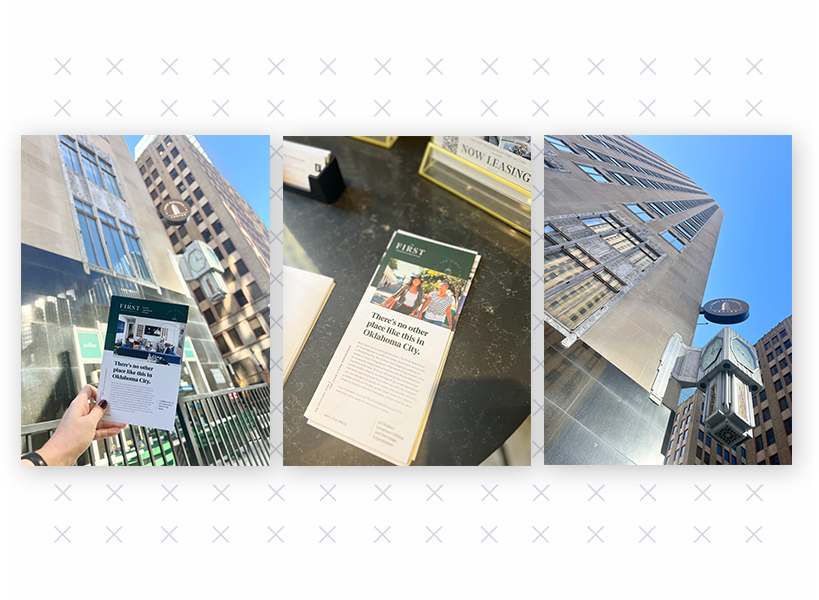
Criterion.B: Your Trusted Partner for Commercial Real Estate Marketing Success
At Criterion.B, we believe in the power of strategic marketing to unlock the full potential of your commercial real estate assets. We are passionate about helping our clients achieve their business goals by developing and implementing marketing strategies that generate engagement, improve your brand presence, and set your properties up for success.
Here’s what sets Criterion.B apart:
- Proven track record: We have a proven history of success in helping commercial real estate owners and managers achieve their marketing goals.
- Client-centric approach: We tailor our services to your needs and budget, ensuring you maximize your multifamily marketing investment.
- Data-driven insights: We base our recommendations on data and analytics to ensure your marketing strategy is always optimized for results.
- Creative and innovative solutions: We think outside the box to develop unique and effective marketing campaigns that capture attention and drive results.
- Transparent communication: We keep you informed every step of the way and provide you with regular reports on the performance of your marketing campaigns.
Ready to Take Your Multifamily Property to the Next Level?
If you’re a property manager looking to navigate the complexities of commercial real estate marketing and achieve your goals for your multifamily property, partnering with a qualified agency like Criterion.B is a strategic decision.
Contact us today for a free consultation and discover how we can help you unlock the full potential of your multifamily community. Together, we can create a winning marketing strategy that positions your property at the top of search results for prospective residents.
Imagine this: a seamless online presence showcasing high-quality photos and virtual tours of your stunning floor plans. Our data-driven approach will ensure your multifamily property appears in all the right marketing channels, increasing engagement and bringing more prospects to your leasing agents. Our multifamily branding agency expertise allows us to craft a unique and memorable brand identity to make your property stand out.
Let Criterion.B be your partner in success. We’ll help you develop a comprehensive marketing strategy that leverages the power of various marketing channels, virtual tours, and a strong online presence to showcase your multifamily community and turn interest into satisfied residents.

How to Slay Your Multifamily Marketing Campaigns
Ever dreamt of launching a killer marketing campaign, only to get bogged down in endless email chains about flyers? Or maybe crafting fresh content feels like scaling Mount Everest while juggling resident requests?
If you’re a property manager, these scenarios are probably all too familiar.
The truth is, even the best marketing ideas can get stuck in a rut, thanks to some common pain points.
But fear not! Here’s the good news: we’re about to expose these pitfalls and offer solutions to streamline your processes and make your marketing a breeze.

1. Ordering Marketing Collateral
Imagine this scenario: You have a brilliant marketing campaign in mind, but its execution hinges on securing eye-catching flyers, high-quality brochures, and branded swag.
Sounds simple, right? Not always.
Ordering these seemingly basic materials often gets bogged down in many back-and-forth emails with vendors. You spend hours negotiating quotes, sifting through design options, and chasing approvals. When you finally get your hands on the finished product, you have lost valuable time and marketing momentum.
Solution: Consider utilizing a centralized online platform like AMP Studio by Criterion.B. This platform streamlines the marketing collateral ordering process by offering a curated selection of pre-approved marketing materials, move-in gifts, promotional items, and uniforms.
No more wading through endless vendor options or managing multiple usernames and passwords. Properties receive a unique link for ordering, ensuring standardization, quality, and cost-efficiency. Plus, AMP Studio automates communication with your internal teams for approvals and facilitates seamless billing.

2. Creating (Quality) Content
Creating fresh, engaging content that resonates with your target audience is a constant struggle. We get it. Between a million and one property management duties, who has time to become a content creation rockstar?
Here’s the good news: generative AI platforms like Gemini, Bard, and ChatGPT can be your secret weapon for brainstorming content ideas and churning out preliminary drafts. Need a blog post on the top dog-friendly cafes near your property? These AI tools can whip you up a decent starting point quickly.
But hold on a sec before you hand over the reins entirely. While AI can be a great time-saver, it can’t replace the human touch. Here’s why:
- Understanding Your Audience: AI might be able to analyze data and identify trends, but it can’t truly understand the nuances of your target audience. Human writers can tap into their experience and empathy to craft content that resonates deeper, addressing your residents’ specific pain points and aspirations.
- Injecting Personality: AI-generated content can often feel robotic and generic. Human writers, on the other hand, can infuse your brand voice and personality into the content, making it more engaging and memorable.
- Strategic Storytelling: Great content isn’t just about facts and figures; it’s about weaving a compelling narrative. Human writers excel at crafting stories that capture the reader’s attention and connect with them emotionally.
The Bottom Line: Think of generative AI as a helpful sidekick, not a superhero. Leverage its capabilities to streamline your content creation process, but don’t underestimate the power of human expertise in crafting content that resonates and drives results.
Solution: Our team of experienced writers and marketing specialists can work alongside you to develop a content calendar packed with engaging content that attracts and converts qualified leads. We’ll help you leverage industry trends and resident voices to make your content stand out, ensuring your property becomes a magnet for dream residents.
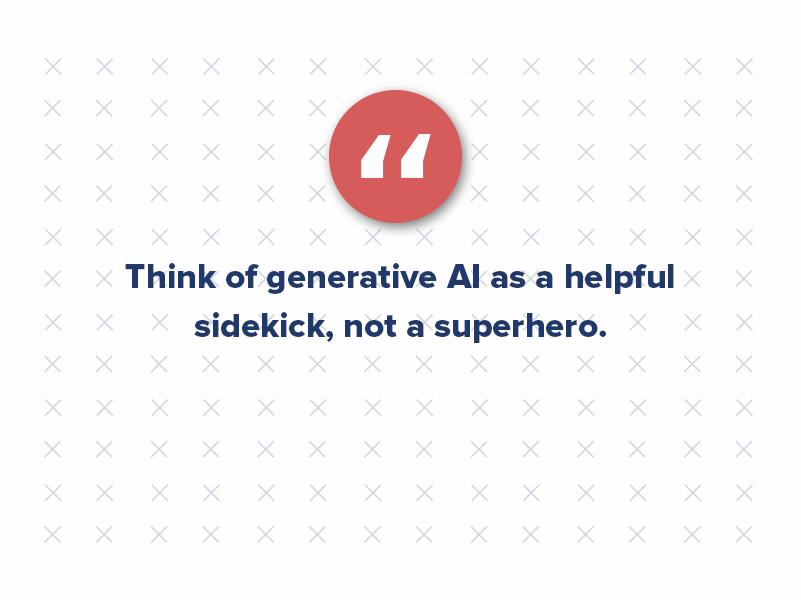
3. Tracking Analytics & Making Sense of the Data
Understanding your target audience and tracking the effectiveness of your marketing efforts is crucial. However, sifting through mountains of data from various sources can be overwhelming. With clear insights, optimizing your campaigns and allocating resources efficiently is easier.
Solution: Let Criterion.B help you navigate the data deluge. We can provide expert analysis to help you understand what’s working and what’s not in your marketing strategy. We’ll help you identify key metrics to track progress and leverage data-driven insights to optimize your campaigns for maximum impact.
4. Leveraging Social Media & Facebook Ads
Reaching the right audience with the right message at the right time can feel like a constant guessing game. Traditional marketing methods often cast a wide net, potentially wasting resources on unqualified leads. Meanwhile, social media demands constant vigilance to ensure your target audience sees your messaging.
Solution: Criterion.B can help you refine your targeting strategy and leverage the power of social media marketing and targeted advertising. We can help you create laser-focused buyer personas to ensure your marketing efforts resonate with the right people. Additionally, we can develop targeted advertising campaigns across various platforms to maximize reach and engagement.

5. Managing Multiple Vendors & Third Parties
Marketing budgets are often under constant scrutiny. Balancing creativity with cost-effectiveness can be a real balancing act. Trying to juggle multiple marketing vendors and projects can easily eat away at your precious resources.
Solution: Partnering with Criterion.B offers a cost-effective solution. Our team offers a comprehensive suite of marketing services, eliminating the need to manage multiple vendors. We work closely with you to develop a strategic plan that aligns with your budget and marketing goals.
Marketing Magic, Not Marketing Mayhem
Imagine this: you’ve nailed down the perfect marketing strategy to attract dream prospects and keep your NOI high. Now, picture yourself free from the daily marketing grind, focusing on what truly matters — managing your thriving business.
This isn’t just a fantasy. You can transform your marketing efforts from a frustrating slog to a strategic superpower by tackling these common pain points. But here’s the secret weapon: you don’t have to go it alone.
Partnering with a multifamily branding agency like Criterion.B and utilizing AMP Studio is like having a team of marketing ninjas in your corner. We’ll handle the heavy lifting — from crafting captivating content to streamlining collateral ordering — so you can focus on what you do best.
Think of it this way: a seamless multifamily marketing strategy frees up your time and resources, allowing you to invest in your business. The result? A thriving organization where prospects feel valued.
Now, that’s a win-win situation worth celebrating.



